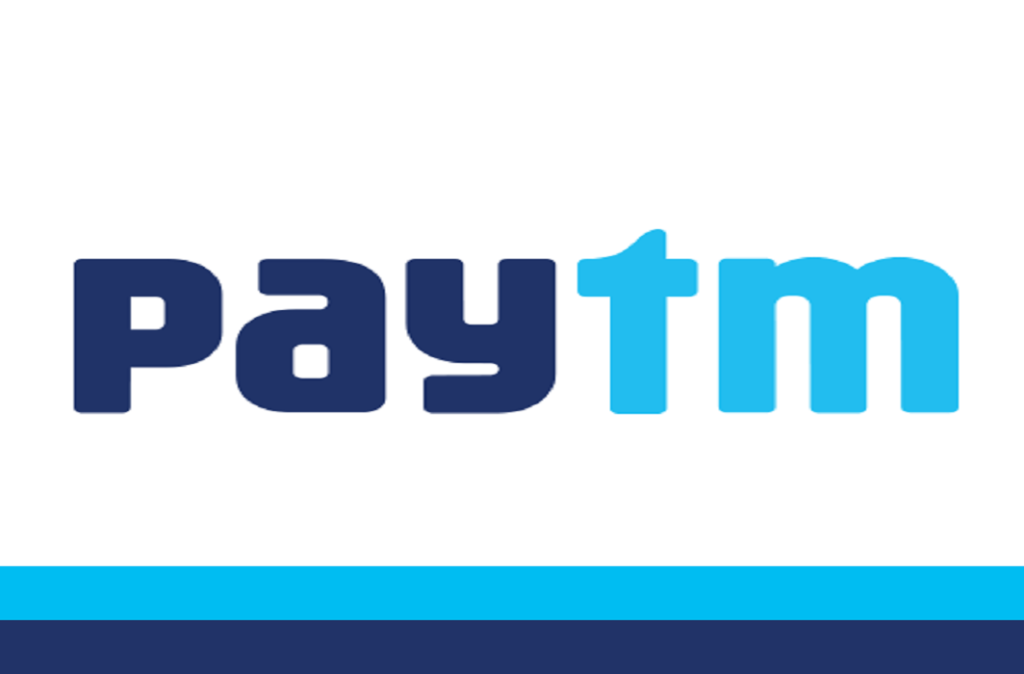India’s Paytm happily says quarterly revenue rises 39% as loan demand soars

India’s Paytm says quarterly revenue rises 39% as loan demand soars
Paytm, the Indian digital payments firm and the parent company of India’s second-largest digital payments app, has reported a significant increase in quarterly revenue. The company, known as One 97 Communications Ltd, saw its revenue surge by 39% year-on-year during the three months ending on June 30.
The rise in revenue was attributed to the soaring demand for loans through their platform. As more customers turned to Paytm for loans and other financial services, the company experienced substantial growth in its business operations.

During this quarter, Paytm managed to generate revenue amounting to 23.42 billion Indian rupees, equivalent to approximately $285.68 million. This figure represents a notable increase from the previous year’s revenue of 16.80 billion rupees during the same period.
The growth in revenue signifies the increasing popularity and usage of digital payment services in India, with Paytm being a prominent player in the market. As digital payment adoption continues to rise in the country, companies like Paytm are positioned to capitalize on the growing demand for convenient and cashless payment solutions.
The financial performance reported by Paytm reflects the company’s successful efforts to diversify its services beyond just payments. By offering additional financial products like loans, the company has managed to attract a larger customer base and increase its revenue streams.
It is worth noting that the digital payment industry in India remains highly competitive, with several other players vying for a share of the market. As such, Paytm’s growth and ability to maintain its position as one of the leading digital payment providers indicate its continued relevance and competitiveness in the industry.

Paytm’s financial performance in the last quarter showed promising signs of growth and stability, as the company reported an operating profit for the third consecutive quarter. This achievement is noteworthy, considering the challenges posed by a rise in employee-related expenses and a lack of government incentives during the period.
Despite the increased expenses associated with employee-related costs, Paytm managed to generate an operating profit of 840 million rupees. This is a significant improvement compared to the same quarter in the previous year when the company incurred an operating loss of 2.75 billion rupees.
Furthermore, Paytm’s efforts to streamline its operations and optimize its financial strategies led to a reduction in net losses. The net loss for the quarter narrowed to 3.57 billion rupees, reflecting the company’s commitment to improving its financial performance.
These positive financial indicators suggest that Paytm’s business model and growth strategies are proving to be effective in navigating the competitive digital payment landscape in India. Despite challenges such as rising costs and a lack of government incentives, the company has managed to achieve profitability and reduce losses.
It is evident that Paytm’s focus on expanding its services beyond traditional payments, particularly in the area of financial products like loans, has contributed to its overall success. By diversifying its offerings and attracting a larger customer base, the company has been able to offset the impact of expenses and move towards profitability.
As the digital payment market in India continues to evolve and mature, companies like Paytm are likely to face both opportunities and challenges. However, their ability to maintain profitability and strengthen their position in the industry positions them well to capitalize on the increasing digitization of financial services in the country.
In the most recent quarter, Paytm continued its positive financial momentum by reporting an operating profit of 840 million rupees. This marked the third consecutive quarter in which the company achieved profitability, showcasing its ability to navigate the dynamic landscape of the digital payment industry in India.
However, the operating profit of 840 million rupees in the current quarter was lower than the previous quarter’s figure of 2.34 billion rupees. The reason for this variance lies in the fact that the earlier quarter’s operating profit included a government incentive specifically designed to promote digital payments made through the Unified Payments Interface (UPI) system.
The government incentive provided a considerable boost to Paytm’s earnings during the previous quarter. Such initiatives are part of the government’s broader efforts to encourage cashless transactions, drive financial inclusion, and foster the growth of the digital economy in the country.
Despite the absence of this government incentive in the current quarter, Paytm’s performance remained strong, generating an operating profit of 840 million rupees. This achievement demonstrates the company’s resilience and its ability to sustain positive financial results even without external incentives. It highlights Paytm’s focus on its core business operations, innovative services, and customer-centric approach.
Paytm’s ability to maintain profitability reflects its successful expansion beyond traditional payment services. The company’s diversification into financial products, such as loans, has contributed to its overall growth and attracted a larger customer base.
The digital payment industry in India is highly competitive, with multiple players vying for market share. Paytm’s consistent profitability showcases its position as a leading player in the sector and its adaptability to changing market conditions.
As the digital payment ecosystem continues to evolve, Paytm’s commitment to innovation and meeting customer needs will play a crucial role in sustaining its growth and maintaining its position as one of India’s leading digital payment providers. By staying focused on its core strengths and adapting to market dynamics, Paytm is well-positioned to capitalize on the ongoing digitization of financial services in the country.
Paytm’s operating profit is defined as the core profit before factoring in the cost of employee stock-owning plans. The company achieved a significant milestone by reporting its first operating profit for the final three months of 2022, a noteworthy achievement as it occurred nine months ahead of schedule.
During the latest quarter, Paytm experienced an increase in expenses, which rose by 15.9% to reach 28 billion rupees. This increase was primarily driven by appraisals during the period, resulting in a 21% rise in employee costs.
Despite the higher expenses, Paytm’s core payments business demonstrated robust performance, with revenue increasing by 31%. This reflects the continued popularity and adoption of Paytm’s digital payment services, contributing significantly to the company’s overall revenue generation.
Moreover, Paytm’s financial services segment also played a crucial role in driving revenue growth. The revenue from financial services, which includes earnings from buy now pay later loans and other offerings, surged by an impressive 93%. This indicates that the company’s expansion into financial products and services has been well-received by consumers, contributing to a diverse revenue stream for Paytm.
Additionally, Paytm’s business model extends beyond digital payments, as the company also provides devices that facilitate payment confirmations for merchants. This aspect of their operations likely contributed to their overall growth and expansion into different areas of the digital payment ecosystem.
Paytm’s ability to achieve operating profitability and maintain a robust revenue growth trajectory underscores its position as a key player in India’s digital payment market. The company’s strategic focus on both core payment services and financial products has enabled it to thrive in a highly competitive industry. As the digital payment landscape continues to evolve, Paytm’s innovative approach and adaptability will play a crucial role in its continued success.
Paytm’s financial services business has been experiencing rapid growth and played a significant role in the company’s overall revenue. During the latest reporting period, the financial services segment accounted for 22.3% of the total revenue, highlighting its increasing importance as a revenue driver for the company.
Furthermore, Paytm’s contribution margin, a crucial financial metric that indicates the profitability of its core operations, witnessed significant improvement. The contribution margin, calculated as revenue less cashbacks and charges like payment processing fees, increased to 56% in the current reporting period. This represents a notable rise from 43% during the same period in the previous year. The improvement in the contribution margin reflects the company’s ability to optimize its revenue streams and effectively manage its costs.
As of the reporting date, the exchange rate between the Indian rupee and the US dollar was $1 = 81.9800 Indian rupees. This information provides context for the financial figures reported in US dollars, given that Paytm is an Indian company and primarily operates in the local currency.
The news report was compiled by Nandan Mandayam in Bengaluru and Siddhi Nayak in Mumbai, showcasing the collaborative efforts of journalists in different cities to cover Paytm’s financial performance. The article was edited by Pooja Desai and Mike Harrison, ensuring accuracy and clarity in the reporting.
Paytm’s robust financial results, particularly the significant growth of its financial services business and the improved contribution margin, demonstrate the company’s continued success in the competitive digital payment market in India. As the company expands its offerings and adapts to evolving customer needs, it is well-positioned to maintain its growth trajectory and strengthen its position as a leading player in the industry.




